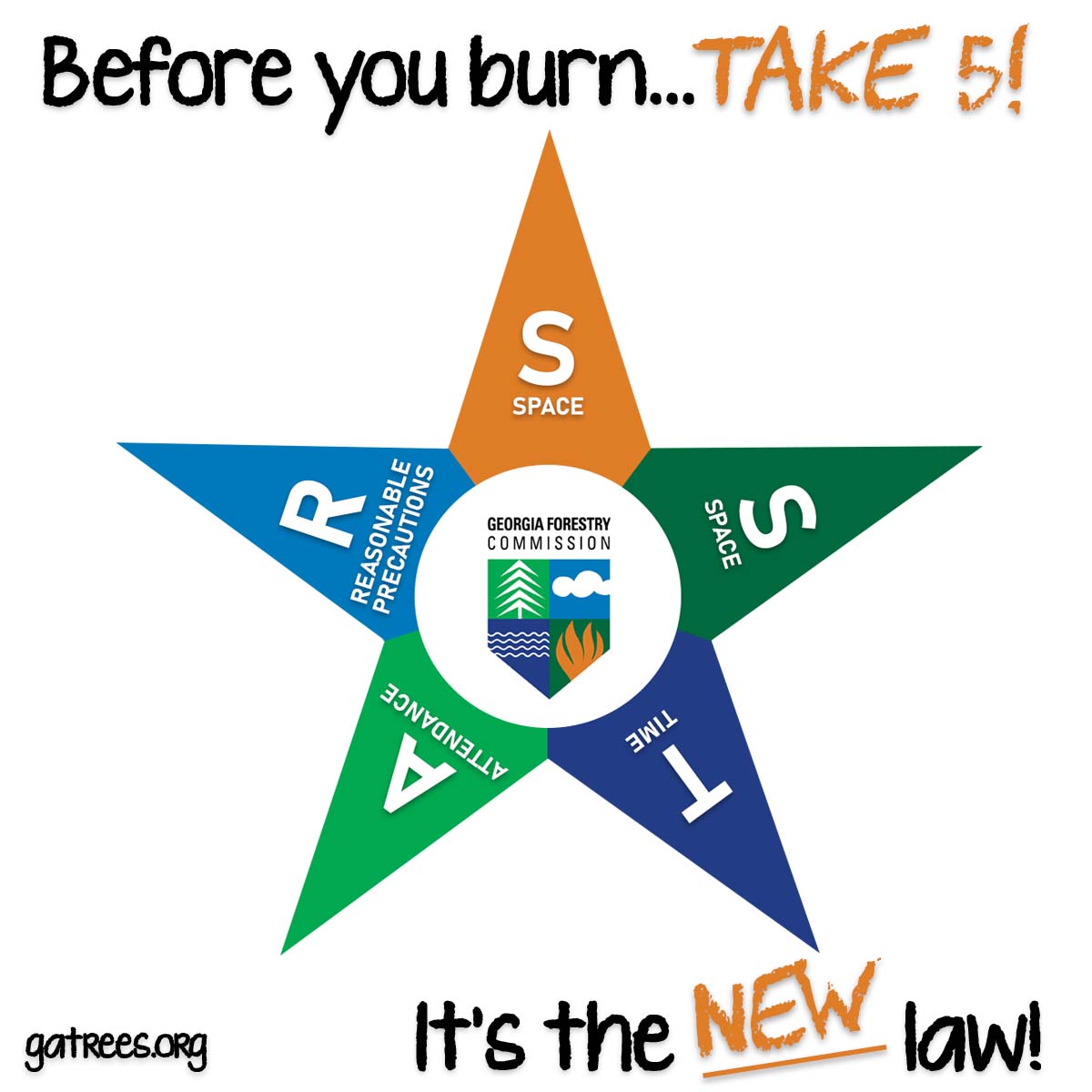* Georgia law no longer requires notification to the Georgia Forestry Commission by people planning to burn yard debris. Charges may apply if wildfire results from escaped burning and evidence show reasonable fire prevention precautions were not taken.
The many benefits of prescribed fire on Georgia forestland are being recognized February 2-8 during “Prescribed Fire Awareness Week.” Prescribed fire, known as “good fire,” is a safe way to apply a natural process, ensure ecosystem health, and reduce wildfire risk
“Sound forest management helps keep Georgia’s forests sustainable, and prescribed fire is a very important management tool,” said Georgia Forestry Commission Director Chuck Williams. “Healthy forests provide so many products, jobs and benefits, including clean air and water, habitat for wildlife, a place to escape and reconnect with nature.”
Prescribed Fire Awareness Week is recognized annually during the first week in February by land managers in Georgia, from private landowners to state and federal public land managers. Governor Brian Kemp’s official 2020 proclamation highlights prescribed fire as one of the most environmentally and economically feasible methods for managing the state’s valuable forest resources. Prescribed fire is key to achieving healthy conditions described in the Georgia Forest Action Plan.
Fire is as natural as sunshine, rain, and wind in many plant communities of the forest that depend upon it. Long ago before western settlement, frequent low-intensity fires would have burned across the forests of Georgia, shaping forest plant communities. Prescribed fire promotes forest health by reducing competition from undesired vegetation, reduces the spread of forest pests and diseases, while improving recreational access and restoring forest habitat. No matter which objective is desired to benefit the forest, periodic prescribed fire prevents the buildup of leaf-litter, dead plants and trees that can lead to devastating wildfires.
Professional foresters and other land managers use prescribed fire to safely mimic these natural forces, carefully applying controlled burning under specific weather conditions to enhance reforestation, aesthetics and forest access. The Georgia Prescribed Fire Council invites the public to register and attend a meeting scheduled on June 4, 2020, in Jasper, Ga., that will encourage the exchange of information, techniques, and experience among practitioners.
“The controlled use of fire, under the direction of skilled resource managers, promotes wildlife and healthy forests, while reducing the risk of unwanted wildfires,” said Mark Melvin, chair of the Georgia Prescribed Fire Council.
Prescribed fire is also a key conservation tool for achieving goals in Georgia’s State Wildlife Action Plan, a comprehensive strategy to conserve native animal and plant species before they become rarer and costlier to save and protect, including by improving the sustainability and resilience of forests. Prescribed fire is essential for managing wildlife species such as bobwhite quail, eastern wild turkey, white-tailed deer, many songbirds, gopher tortoises, the endangered red-cockaded woodpecker and other fire-dependent species. Prescribed burning is the only known forest management method which perpetuates the longleaf/wiregrass ecosystem, Georgia’s most diverse flora and fauna ecosystem.
“From rare plants such as like the white monkeyface orchid to endangered wildlife like the red-cockaded woodpecker, prescribed fire restores habitat conditions that nature needs,” said Dr. Jon Ambrose, chief of the Georgia Department of Natural Resources’ Wildlife Conservation Section.
Approximately 35,000 acres across the Chattahoochee-Oconee National Forests may be treated with prescribed fire from early February through mid-April. The Forest Service goal is to safely apply low-intensity controlled burns to reduce the duff layer common in thick overgrown unmanaged forest areas that choke out sunlight from native grasses, wildflowers and desired tree seedlings. This goal on the national forest is also a land management priority identified by State of Georgia agencies.
“We work with our State agency partners, as well as conservation groups like The Nature Conservancy and Georgia Plant Conservation Alliance, in stewardship of the Chattahoochee-Oconee National Forest,” said Forest Supervisor Betty Jewett. “Whether restoring Table Mountain Pine in the mountains, or Shortleaf and Longleaf pine forests in the piedmont, these partners provide important help in meeting our goal to apply prescribed fire that benefits these trees and habitats.” In 2019, the USDA Forest Service and the State of Georgia signed a Shared Stewardship agreement (PDF, 262 KB) that strengthens the commitment between federal and state agencies to work together to accomplish mutual natural resource management goals, further common interests, and effectively respond to the increasing ecological challenges and natural resource concerns in Georgia.
To learn more about prescribed fire and activities on public lands, visit GeorgiaWildlife.com, GaStateParks.org, GaRxFire.com, GoodFires.org, or @ChattOconeeNF.
# # #

